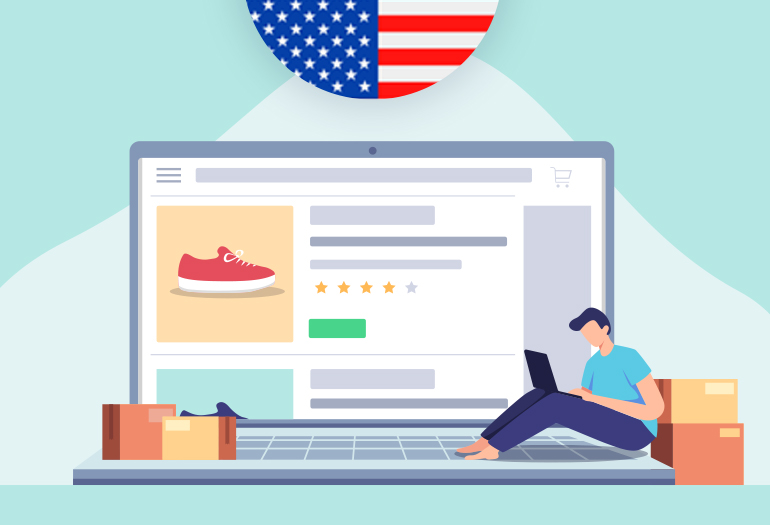

Online, product content serves as your packaging, 30-second commercial, promotional display, and more. Profitero’s research shows that having complete, correct and compelling content on the digital shelf can boost sales, traffic and conversion. In fact, we found brands get a 58% lift in sales, on average, on Amazon when they add videos to their product detail page (PDP) to meet category benchmarks. Adding more images yields a 45% average sales lift.
But one size doesn’t fit all when it comes to retail content management. What brands can actually do or have control over differs across retailer websites. Furthermore, what retailers require from vendors (typically via vendor scorecards) differs from retailer to retailer. In this blog, we highlight the enhanced product content capabilities of 7 of the most highly trafficked eCommerce sites in the U.S. — Amazon, Best Buy, The Home Depot, Instacart, Kroger, Target and Walmart — comparing and contrasting what you can and can’t do.
A quick look at the different content capabilities supported by retailer websites
Source: Profitero
|
Amazon (1P) |
Best Buy |
Home Depot |
Instacart |
Kroger |
Target |
Walmart* |
|
|
Multiple images on product page |
Y |
Y |
Y |
Y |
Y |
Y |
Y |
|
Cambridge mobile hero images |
Y |
Y |
Y |
Y |
Y |
Y |
Y |
|
Spin 360 images |
Y |
N |
Y |
N |
N |
N |
N |
|
3D Augmented Reality |
N |
N |
Y |
N |
N |
N |
N |
|
Videos on product page |
Y |
Y |
Y |
N |
N |
Y |
N |
|
Below-the-fold enhanced content |
Y |
Y |
Y |
N |
N |
Y |
N |
|
Customer Q&A section |
Y |
Y |
Y |
N |
N |
Y |
N |
|
Customer testimonial videos |
Y |
N |
Y |
N |
N |
Y |
N |
* Newly integrated site as of Nov 2021
Let’s dig in deeper, highlighting some examples to compare and contrast what brands can / can’t do with product content on these websites. We’ll also offer some pro tips as you think about your retail content management.
Retail Content Management: Above-the-fold images and videos
Amazon: Amazon provides a ton of space to add multiple images and videos above the fold, so take full advantage of it. Our SEO research finds a high correlation between the number of images on Amazon and a high search ranking.
PRO TIPS:
- Aim to have at least 7 images on Amazon product detail pages (PDPs); this is a good benchmark according to our research
- Make sure your hero image (the primary image in your carousel, on your PDP, and in search results) is a front-of-pack shot on a white background as required by Amazon
- Use different image types (e.g., out-of-box display; product usage; lifestyle imagery; scale and proportion; etc.) to build your narrative
- Order images so those with the highest conversion potential — i.e., best features, benefits, etc. — appear early; this is because only the first 7 (or 6 plus a video) are shown on the PDP (Note: Remaining images are viewable by clicking on the image gallery)
- Leverage spin 360 images for products and categories where it makes sense; spin 360 lets consumers virtually interact with a product, rotating it to view from different angles. Some brands have seen up to an 85% lift in conversion rate using spin 360, according to our research.
PRO TIP: Aim to have at least 7 images (and different types) on Amazon
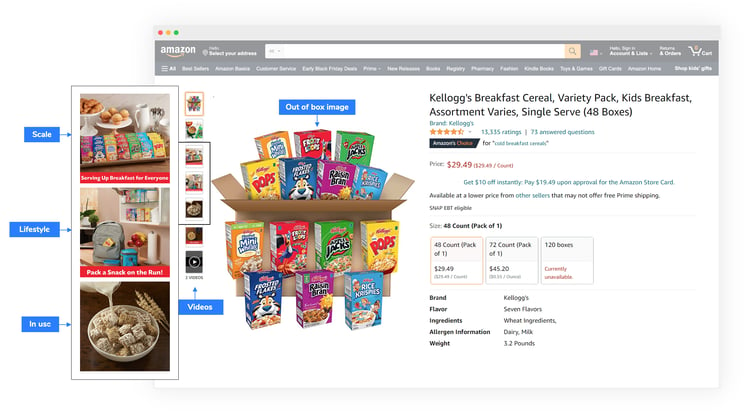
PRO TIP: Order images so those with highest conversion appear early on Amazon
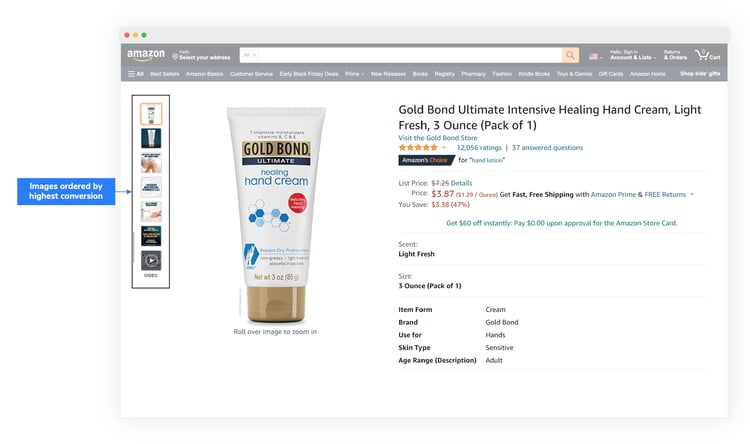
PRO TIP: Leverage the spin 360 capability on Amazon
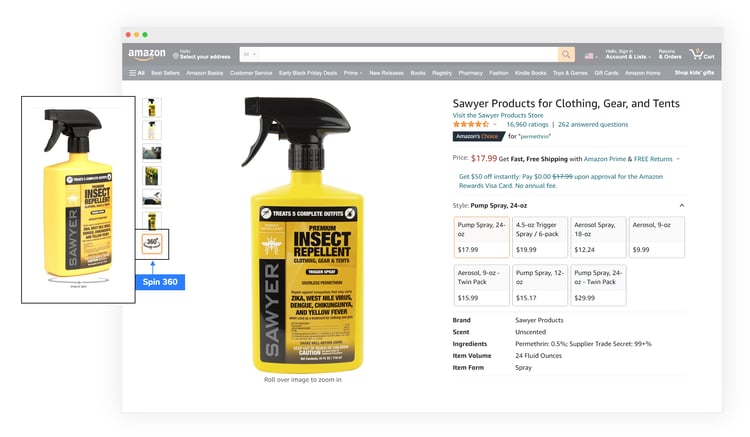
The Home Depot: Like Amazon, our SEO research also finds a high correlation between the number of images on HomeDepot.com and high search ranking.
PRO TIPS:
- Aim for 6-9 images (depending on the product category) on Home Depot PDPs, according to our benchmark research
- Use spin 360 images for products where it makes sense, e.g., so shoppers can see all views and features of the product as if they were in the store
- Leverage the site’s 3D Augmented Reality capability, which lets consumers with an AR compatible Apple device (iOS 12 or higher) see what the product looks like in the actual space where they’ll be installing or using it
PRO TIP: Take advantage of spin 360 and augmented reality on The Home Depot
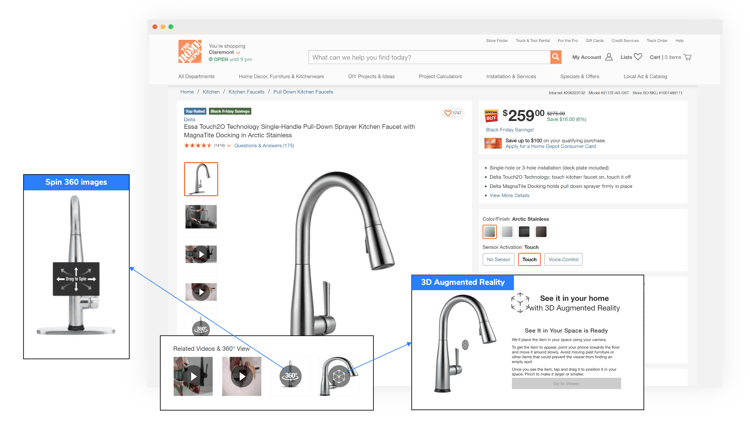
Best Buy: Best Buy supports multiple images and videos, but unlike The Home Depot, spin 360 and AR aren’t currently supported.
PRO TIPS:
- Aim for 5-8 images on your Best Buy PDPs, according to our benchmark research
- Create videos exclusive to Best Buy, using product “experts” (in a Best Buy polo shirt) explaining product features and use cases
PRO TIP: Develop videos exclusively for Best Buy
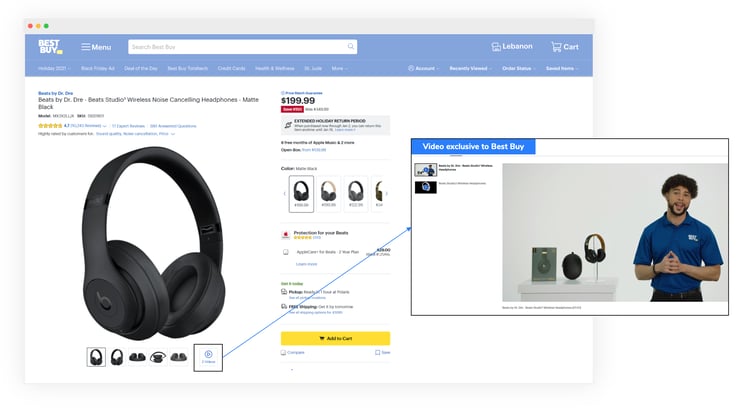
Target: Target has specific content guidelines that vendors must follow, so be sure to comply.
PRO TIPS:
- Aim for 4-7 images on your Target PDPs, according to our benchmark research
- Make your hero image a front-of-pack on a white background shot (similar to what Amazon requires)
- Make your second image count on Target, because it’s viewable in search results when Target guests hover over the hero image
- Pay attention to your hero and second image count on Target, since Target guests can “add to cart” directly from the search results page
- Encourage Target guests to upload and share their own pictures on Target’s site; it’s one of few retailers that supports consumer-generated images right in the carousel
PRO TIP: Pay attention to the hero AND second image on Target
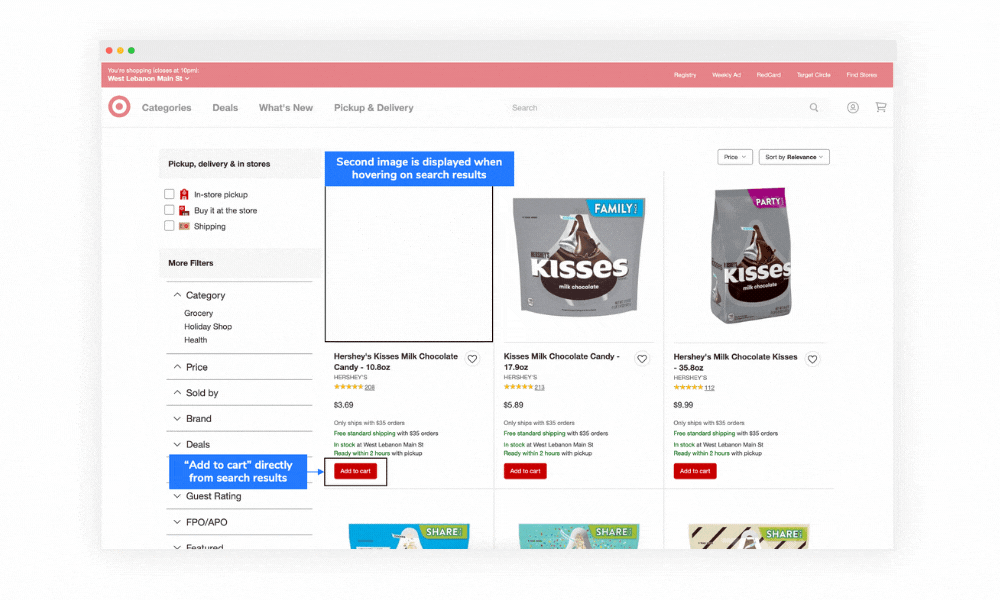
PRO TIP: Encourage Target guests to upload their own images to the site
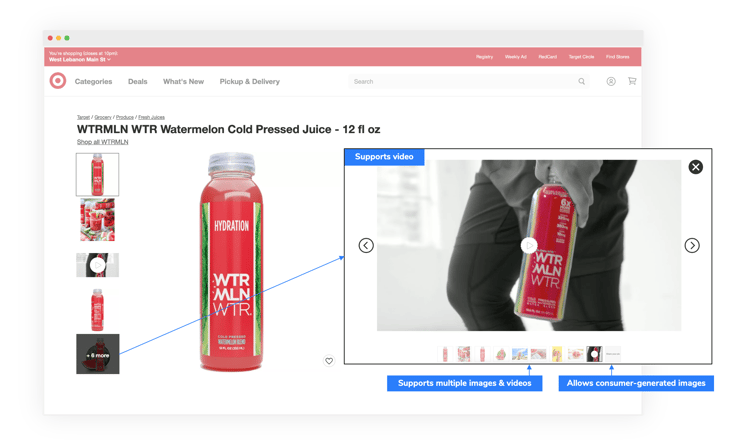
Walmart: With the launch of its integrated website, Walmart PDPs are pretty bare bones since it has paused rich media capabilities. Still, there are some notable distinctions on the use of images on Walmart’s website.
PRO TIPS:
- 6-8 images is a good benchmark to aim for on Walmart, according to our research; but feature as many as you want since Walmart reportedly has no set limit on image count
- Be smart about how you order images, since only the first 5 are displayed on Walmart PDPs; the entire image carousel is still viewable by clicking or scrolling
- Use a Cambridge mobile hero image, or feature off-package text and graphics on your hero images; Walmart’s guidelines are much more flexible than Amazon or Target
- Use enhanced feature-benefit images on Walmart’s site to help build a narrative
PRO TIP: Highlight off-package text and graphics on your Walmart hero images
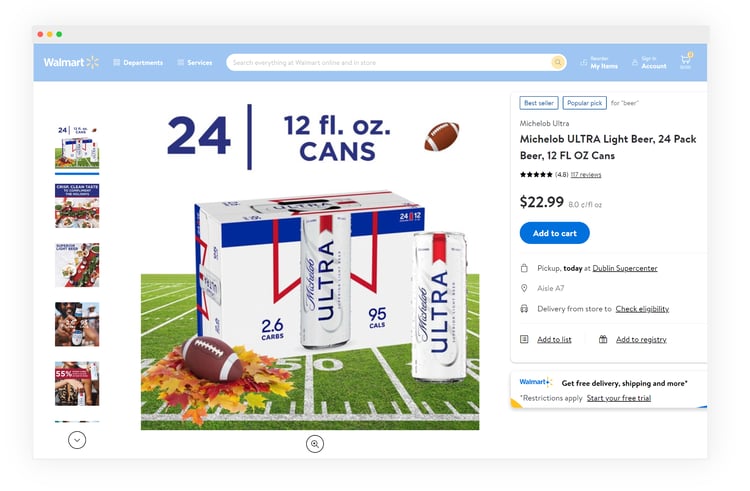
PRO TIP: Use enhanced feature-benefit images to build a narrative on Walmart
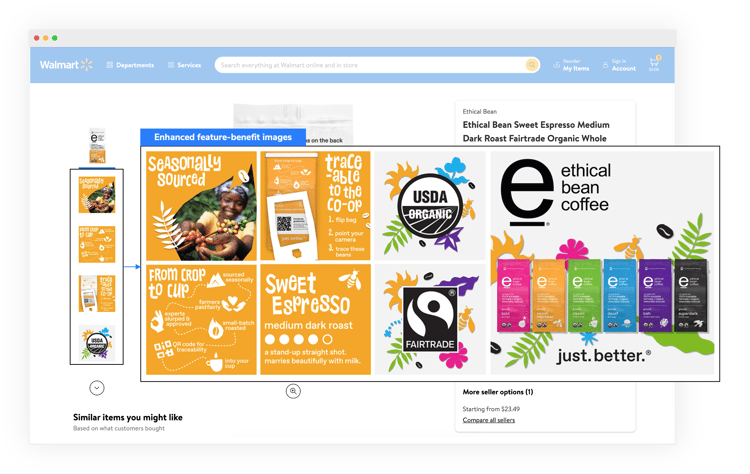
Kroger and Instacart: Both have pretty basic-looking PDPs when it comes to images and videos. This makes it all the more important to nail your hero image.
PRO TIP:
- Take a test & learn approach on sites like Amazon or Target, which have more advanced image capabilities, so you get a good feel for what works versus doesn’t; this way you don’t have to start from scratch when other retailer capabilities catch up
PRO TIP: Know what above-the-fold content works best for your brand so you’re ready when other retailers, like Kroger and Instacart, add new capabilities
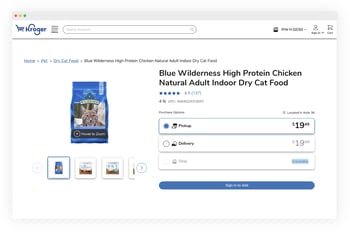
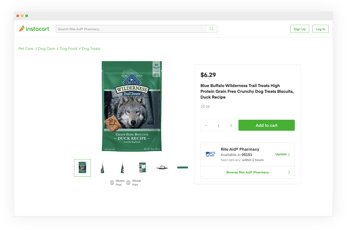
Retail Content Management: Below-the-fold A+ / Enhanced Manufacturer Content
Enhanced content (or A+ content on Amazon specifically) is the supplementary content supplied by manufacturers typically positioned “below the fold” or about halfway down a product detail page. Examples include additional images and videos, product comparison grids, decision guides, and manufacturer Q&A. According to our research, brands can get a 15% average sales lift on Amazon by improving enhanced content to meet category benchmark standards.
Below are some examples of what you can do with below-the-fold enhanced content on different retailer sites to help support conversion and lift sales.
Amazon PRO TIP: Take advantage of all Amazon capabilities in order to provide as much information as possible to online shoppers.
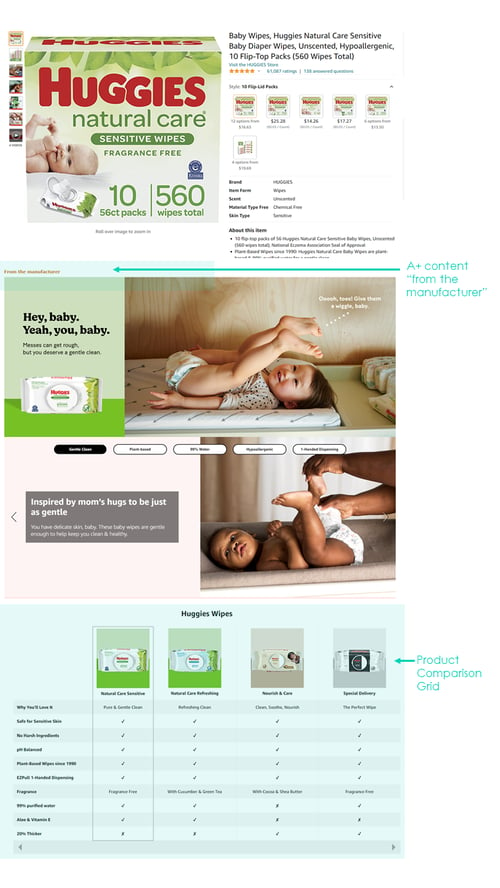
The Home Depot PRO TIP: Add detailed product information, specs, comparison grids, and manufacturer guidebooks to help educate shoppers on products and oftentimes complex use cases.
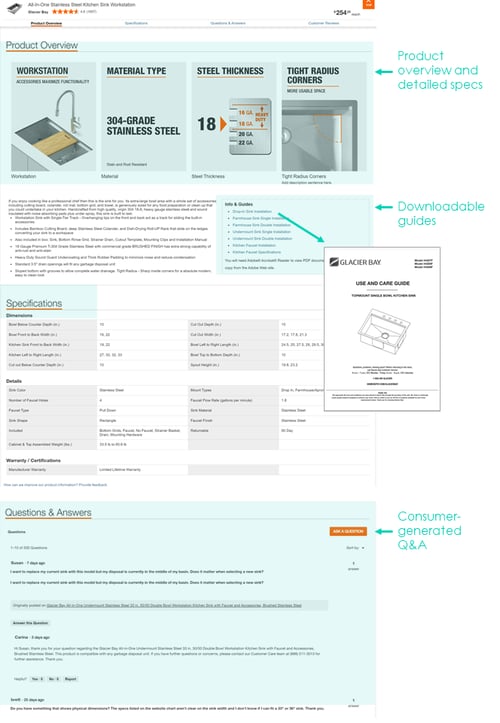
Target PRO TIP: Be sure to add “at-a-glance” icons developed by Target, which not only helps guests identify important product attributes, e.g., gluten free, non-GMO, vegan, paraben free, etc., but also impacts search placement.
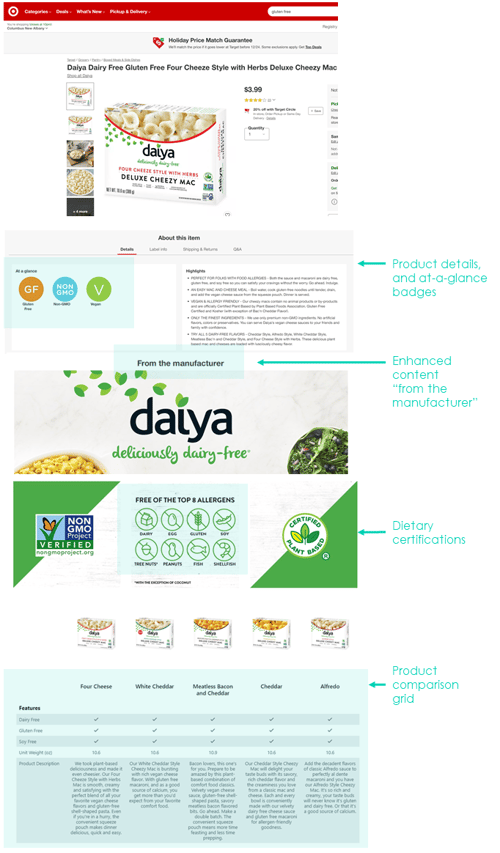
Walmart PRO TIP: Include as much below-the-fold content that Walmart currently allows, but be ready to add rich media when Walmart once again begins supporting it.
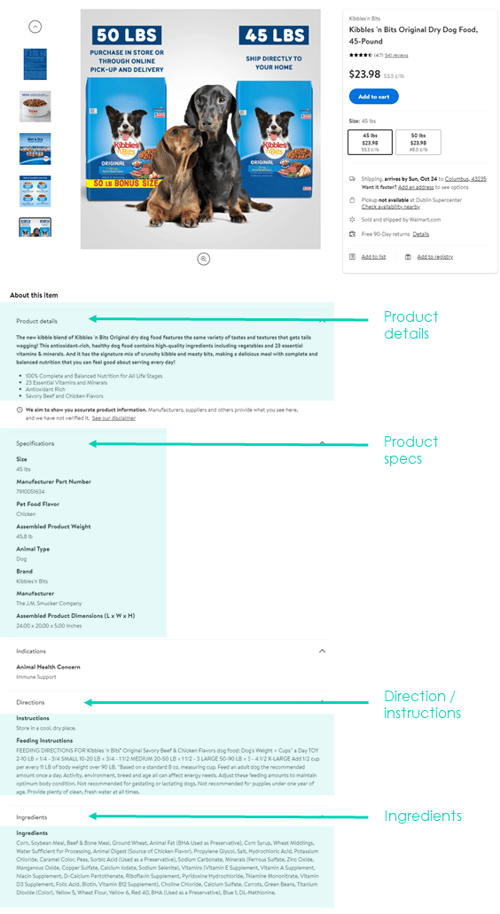
So what? Now what?
- Start with the basics. Ensure content elements on your product detail pages meet benchmark standards, including your own internally established rules and your retailers’ vendor scorecards. Benchmark against competitors and/or bestsellers in your category to ensure your content adequately stacks up.
- Nail hero images on sites where it matters. Some eCommerce sites — of the ones we analyzed: Best Buy, Instacart, Kroger, Target and The Home Depot — allow shoppers to buy or “add to cart” directly from the search results page, so consumers may never even go to your PDP. This makes nailing your hero image, which shows up in search results, all the more important on these sites.
- Monitor, measure & syndicate. Invest in automated tools (e.g., Product Information Management / Digital Asset Management (PIM/DAM); digital shelf auditing tools; etc.) to build a cost-effective approach to monitoring, measuring and refreshing content.
- Establish retailer-specific scorecards. There’s no one size fits all when it comes to retail content management, so using a standard scorecard across all retailers to gauge your performance won’t work either. Our SEO research also finds that different metrics matter for different retailers. So it’s a good practice to establish retailer-specific scorecards that (1) account for each retailer’s individual content capabilities, and (2) are appropriately weighted to what moves the needle on a particular retailer’s site.
- Optimize content for conversion. Designate team members (either internally or at an agency partner) to identify optimization and ROI improvement opportunities; The application of advanced analytics or AI technologies to do real-time A/B testing of product visuals before they hit the digital shelf could be worth the investment.
Contact us to learn more about how Profitero’s insights can help you manage and optimize your product content across different retailer sites.


























